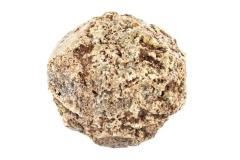Comments and Tags
Be the first to comment on this item!
Rocks and Minerals ➔ Topaz
Identifier:
1991.2.9.8Description:
Topaz is a silicate mineral containing aluminum and fluorine. It is very hard and forms in igneous rocks as well as hydrothermal ore deposits. It presents as many colors such as white, yellow, pink, blue, and green. This specimen is pink.Formula: Al2SiO4(F,OH)2
Current Location Status:
Education ProgramCollection Tier:
Tier 3Source:
In Memory Of Les JonesExhibits/Programs:
Science Tuesday: The Science of Snow (December 2016)Science Tuesdays is an ongoing educational experience, offering science programming based on changing themes each month. Science Tuesdays take place throughout the day on Tuesdays at the Museum and include a variety of activities and interactive displays.
Discovery Kit: Rocks & Minerals ()
Think like a geologist and explore a collection of rocks and minerals, many of which are found here in Michigan. Learn about Earth’s minerals, geological processes, and how rocks are formed!
Discovery Kits include a variety of artifacts and specimens from the Museum’s Collection that allow students to investigate global and local objects. The Collections support the Museum’s mission of inspiring curiosity and discovery around science, history, and culture. Each kit includes objects from the Museums archives, helpful resources and suggested activities. Discovery Kits are a great way for teachers to incorporate primary source and object-based learning into the classroom or as a way to prepare for or extend a Museum visit.
Related Entity:
Berdeana Jones (donor)Berdeana Jones donated 335 geological specimens (1991.2) to the museum on January 14, 1991, in honor of her husband, Les Jones. The collection is noted to have been compiled between 1955-1985. Les was truck driver by trade and an avid collector of rocks/minerals and cacti. He began collecting rocks in 1965 and developed a fondness for the west and southwest of the United States after trucking produce to that area for years. He would take a month off each year and travel all around the U.S., looking for pieces for his collection. Unfortunately, the accession file contains no information about where individual specimens originated. That information was probably lost when Les passed away.
